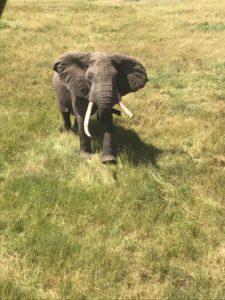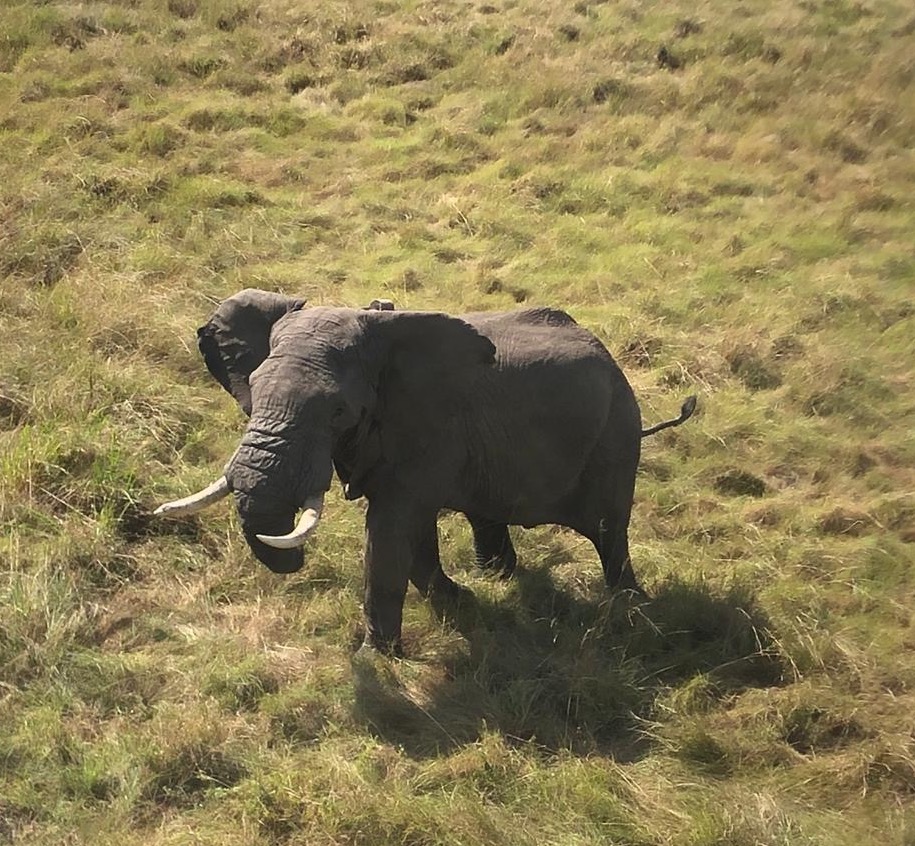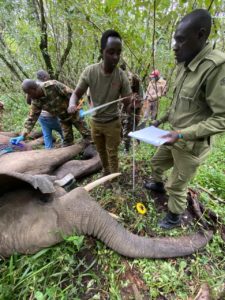A big focus for the MEP Research Department in the second quarter was to work with other research and conservation partners in the Mara to restructure the ‘One Mara Research Hub’ with which MEP has helped since its inception in early 2019. The inspiration for the Hub is to be a mechanism to facilitate collaboration and communication amongst researchers and conservationists in the Mara. We are working on growing the network of people involved in the hub, and from the pool of human and scientific resources, form dedicated working groups to tackle large, landscape level conservation issues. One such working group was established last November to submit wildlife-specific inputs to the Narok County spatial plan. MEP, working together with Smithsonian, Kenya Wildlife Service (KWS), World Wildlife Fund (WWF), Kenya Wildlife Trust (KWT) and other partners, has been able to advise on the locations of elephant corridors, high density core areas and less frequently-used elephant dispersal areas in the hope that these data will inform land-use planning by Narok County Government in the years to come.
In May, the MEP Research Department kicked off a project to develop a database and photo management system for elephant ID photos. A student from Caltech will be leading the project on MEP’s behalf and working together with WildMe (based in Portland) and Vulcan (based in Seattle) to setup an elephant Wildbook. MEP is collaborating with both ElephantVoices and Elephants Alive on this project. The goal is to develop a streamlined workflow to acquire field photos of elephants and ID them based on historic photos stored in the database or log a new individual based on the sighting information. We’re making progress on an analysis of elephant range use in the Mara. The database consists of nearly one million recorded positions since 2011. We are using a resource selection approach to quantify how elephants select certain components in the landscape. These covariates include vegetation quality/quantity, terrain, security, proximity to water and people.
The research department’s two research field assistants (David and Amos) covered a lot of the Mara using MEP’s Njia application mapping fences and collecting ground truth points necessary to develop our landcover map. David is focused on collecting ground control points to help with a landcover classification while Amos is mapping the proliferation of fences spreading across the Loita Plains.
Using the software module, we are developing to interface with EarthRanger we’ve now been able to extract collar battery voltage information that compares voltage over the current month versus the historical statistics for that unit. Using this method, we’ve now seen that three of our collars are approaching the end of their lifetime and need to be replaced.
Using Esri ArcGIS Pro software the MEP Research Department was able to develop an animation of crop-raiding behavior that was featured in a blog about their research into human-elephant conflict. The 3D animation technique is one of the most effective ways of visualizing tracking data to see what crop raiding looks like. In the animation, we see the three elephants hiding during daylight in forested ‘staging’ sites while raiding crops each night for a week in early 2017. Esri has generously renewed our organizational license for another year and Save The Elephants promoted MEP’s conflict blog on their vastly followed social media channels, which provided great exposure for our organization
The elephant Fitz, sponsored by Angama Foundation, located in the Nyakweri Forest has been very busy raiding crops alongside his herd in the second quarter. In response to this MEP and KWS sent a rapid response team to this area to respond to conflict. MEP rangers on the ground caught glimpses of Fitz in the forest as they chased him out of farms at night. Ivy continued her crop raiding behavior breaking geo-fences in the Enoonkishu area and Hannibal and Napoleon continued to spend time together moving around the Mosiro area and raiding farms at night.

Unfortunately, one of MEP’s longest continually tracked elephants Caroline was found dead on May 8 of natural causes. Caroline was originally collared in December 2011 and was re-collared twice, February 2015 and May 2018, which helped MEP establish a long-term record of her movements to build a case for support to protect the Pardamat Conservancy. Collared elephant Kiambi reported a low speed alert at several locations in May but the MEP aerial team confirmed he was doing well after flying over to check on him (pictured left). He was spotted with a big group of females in the Reserve. MEP aerially monitored Shorty who started June on the southern side of the Serengeti National Reserve then moved into Kenya near the border. He was spotted with a mixed group of 15 elephants. Unfortunately, Chelsea’s collar battery lost power in June and will need to be replaced soon.

Shorty photographed on June 26 during an aerial monitoring flight.
 On June 15, Mara Elephant Project in partnership with KWS collared a bull elephant “Shamba” that was injured after being caught in farms by rapidly rising waters across the Mara River. (pictured left: MEP’s Data and Reporting Manager Wilson Sairowua was tasked with collecting information for the collaring sheet. He’s seen here collecting data on the length and width of Shamba’s tusks.) Shamba was monitored for a short 10 days after which he died of his injuries. On June 25, MEP received an immobility alert from his collar and the cause of death was determined by a KWS autopsy as most likely thromboembolism. The MEP team was able to recover Shamba’s elephant collar to re-deploy this year. The second collaring MEP did was requested by KWS in response to conflict as well. In the Londiani area north of the Mau, “Ritan” was identified as a “cropaholic” elephant; going into farms around Deloraine on a nightly basis. The KWS ground team based in the area remains vigilant and pushes him back into the forest when he breaks through the geo-fence MEP established around the forest.
On June 15, Mara Elephant Project in partnership with KWS collared a bull elephant “Shamba” that was injured after being caught in farms by rapidly rising waters across the Mara River. (pictured left: MEP’s Data and Reporting Manager Wilson Sairowua was tasked with collecting information for the collaring sheet. He’s seen here collecting data on the length and width of Shamba’s tusks.) Shamba was monitored for a short 10 days after which he died of his injuries. On June 25, MEP received an immobility alert from his collar and the cause of death was determined by a KWS autopsy as most likely thromboembolism. The MEP team was able to recover Shamba’s elephant collar to re-deploy this year. The second collaring MEP did was requested by KWS in response to conflict as well. In the Londiani area north of the Mau, “Ritan” was identified as a “cropaholic” elephant; going into farms around Deloraine on a nightly basis. The KWS ground team based in the area remains vigilant and pushes him back into the forest when he breaks through the geo-fence MEP established around the forest.


